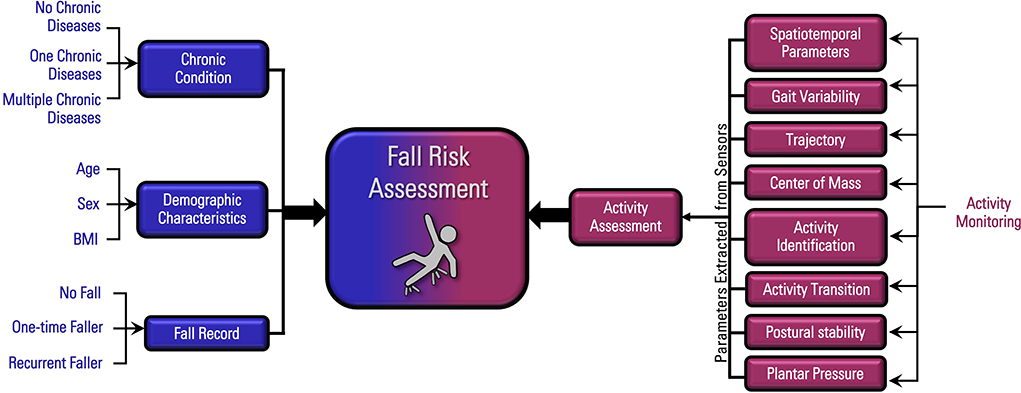How Dementia Fall Risk can Save You Time, Stress, and Money.
Dementia Fall Risk - An Overview
Table of ContentsTop Guidelines Of Dementia Fall RiskDementia Fall Risk Things To Know Before You Get ThisSome Ideas on Dementia Fall Risk You Should Know10 Simple Techniques For Dementia Fall Risk
A loss threat assessment checks to see how likely it is that you will certainly drop. The evaluation normally consists of: This consists of a collection of inquiries concerning your total health and if you've had previous falls or problems with balance, standing, and/or walking.STEADI includes testing, assessing, and intervention. Treatments are referrals that might minimize your threat of dropping. STEADI consists of three steps: you for your danger of succumbing to your danger aspects that can be enhanced to try to stop drops (for instance, balance issues, impaired vision) to decrease your risk of falling by making use of effective techniques (as an example, supplying education and resources), you may be asked a number of concerns including: Have you dropped in the past year? Do you really feel unstable when standing or walking? Are you bothered with dropping?, your provider will certainly examine your toughness, equilibrium, and stride, utilizing the complying with loss assessment tools: This test checks your stride.
If it takes you 12 secs or even more, it may mean you are at higher danger for a fall. This test checks strength and balance.
Move one foot halfway forward, so the instep is touching the large toe of your other foot. Relocate one foot completely in front of the other, so the toes are touching the heel of your various other foot.
The Best Strategy To Use For Dementia Fall Risk
The majority of drops happen as a result of several adding factors; consequently, managing the risk of falling begins with determining the variables that contribute to fall danger - Dementia Fall Risk. Some of the most appropriate threat aspects consist of: Background of previous fallsChronic medical conditionsAcute illnessImpaired gait and equilibrium, lower extremity weaknessCognitive impairmentChanges in visionCertain risky medicines and polypharmacyEnvironmental aspects can also raise the danger for drops, including: Insufficient lightingUneven or harmed flooringWet or unsafe floorsMissing or harmed handrails and grab barsDamaged or incorrectly fitted equipment, such as beds, mobility devices, or walkersImproper usage of assistive devicesInadequate supervision of the individuals living in the NF, consisting of those who exhibit hostile behaviorsA successful autumn threat management program calls for a detailed scientific analysis, with input from all participants of the interdisciplinary group

The treatment plan need to additionally include interventions that are system-based, such as those that advertise a risk-free setting (proper lighting, handrails, get hold of bars, etc). The effectiveness of the treatments should be reviewed periodically, and the treatment strategy changed as needed to mirror changes in the loss danger assessment. Executing a fall threat monitoring system using evidence-based ideal method can minimize the occurrence of drops in the NF, while restricting the capacity for fall-related injuries.
The 6-Second Trick For Dementia Fall Risk
The AGS/BGS guideline advises screening all adults matured 65 years and older for fall threat annually. This testing is composed of asking clients whether they have dropped 2 or more times in the previous year or sought clinical focus for a fall, or, if they have not fallen, whether they really feel unsteady when walking.
People who have actually dropped when without injury must have their balance and gait evaluated; those with gait or equilibrium irregularities must get additional analysis. A background of 1 fall without injury and without gait or equilibrium troubles does not necessitate further assessment beyond continued annual autumn danger testing. Dementia Fall Risk. A fall danger evaluation is needed as part of the Welcome to Medicare examination

Dementia Fall Risk for Beginners
Recording a drops history is just one of the high quality indications for autumn prevention and monitoring. A critical part of danger analysis is a medicine testimonial. Several classes of drugs enhance fall threat (Table 2). Psychoactive medicines specifically are independent forecasters of drops. These medications often tend to be sedating, alter the sensorium, and harm balance and stride.
Postural hypotension can often be reduced by lowering the dosage of blood pressurelowering medicines and/or stopping medicines that have orthostatic hypotension as a side result. Usage of above-the-knee support hose pipe and resting with the head of the bed elevated may also minimize postural decreases in blood stress. The suggested aspects of a fall-focused health examination are received Box 1.

A Pull time better than or equivalent to 12 seconds recommends high loss threat. Being not able to stand up from a chair of knee elevation without using one's arms shows raised loss Read Full Article danger.